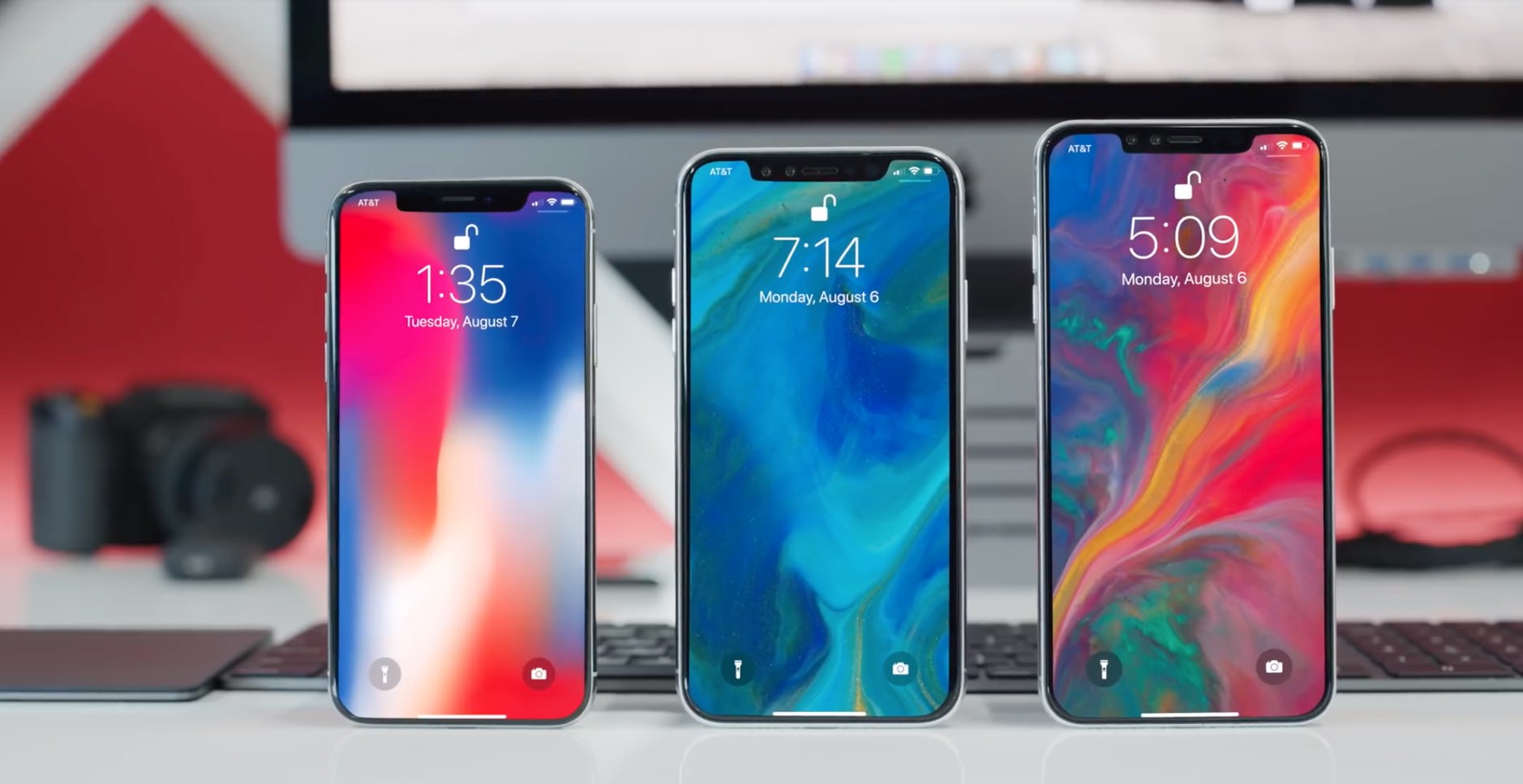„Apple to Embrace iPhone X Design With New Colors, Bigger Screens”

via Marques Brownlee
There’ll be a new high-end iPhone, internally dubbed D33, with a display that measures about 6.5-inch diagonally, according to the people familiar with the matter. That would make it the largest iPhone by far and one of the biggest mainstream phones on the market. It will continue to have a glass back with stainless steel edges and dual cameras on the back. The big difference on the software side will be the ability to view content side-by-side in apps like Mail and Calendar. It will be Apple’s second phone with a crisper organic light-emitting diode, or OLED, screen. […]
Apple also plans an upgrade to the current iPhone X with a 5.8-inch OLED screen, which is internally dubbed D32, the people said. The main changes to the new OLED iPhones will be to processing speed and the camera, according to the people familiar with the devices. […]
Perhaps the most significant phone will be a new, cheaper device destined to replace the iPhone 8. Codenamed N84, it will look like the iPhone X, but include a larger near 6.1-inch screen, come in multiple colors, and sport aluminum edges instead of the iPhone X’s stainless steel casing. It will also have a cheaper LCD screen instead of an OLED panel to keep costs down.
Apple setzt in dieser Season nicht wie gewohnt nur ein neues iPhone-Modell an ihre Spitze, sondern tauscht gleich das komplette Team aus. Wir hatten eine vergleichbare Situation vor fünf Jahren schon einmal: Zusammen mit dem iPhone 5s probierte sich Apple damals an einem farbenfrohen iPhone 5c. Nach einem Jahr wurden die beiden Speicherausführungen – 16 GB und 32 GB – eingestellt; ein neues 8 GB-Modell vom iPhone 5C hielt sich (nur) noch ein weiteres Jahr.
Der (relativ hohe) Preis war ein Problem; das 5c scheiterte allem voran jedoch als Statussymbol. Das 5c war nie Apples Flagship-Telefon, wohingegen ältere iPhone-Modelle, die nach einem Jahr günstiger verkauft werden, diesen Status behielten. Mit dem iPhone 5c kaufte man (für jeden offensichtlich) das „billige iPhone”; ein älteres iPhone-Modell löst diese gedankliche Verbindung nicht aus.
Mit drei neuen Modellen, die alle mit einem ‚Edge-to-Edge‘-Display ausgestattet sind und alle die neue iOS-Gestensteuerung beherrschen, weil sie alle Face ID statt dem betagten Homebutton einsetzen, scheint Apple aus diesem Fehler gelernt zu haben.